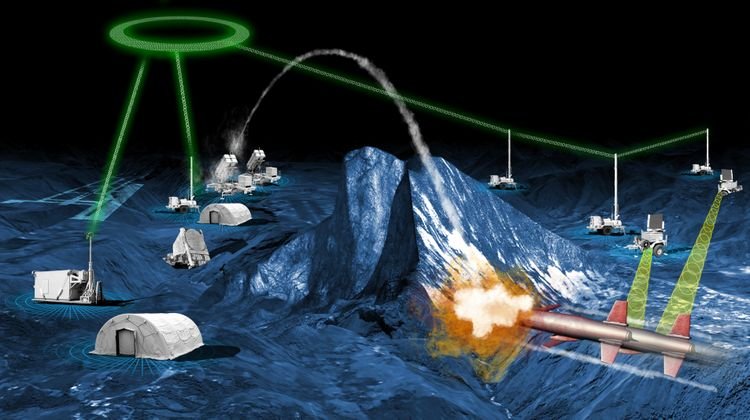The "plug-and-fight" architecture of Northrop Grumman's Integrated Air and Missile Defense Battle Command System enables "any-sensor, best-shooter" operations with a greatly expanded single integrated air picture. Photo courtesy of Northrop Grumman
Sept. 13 (UPI) -- Northrop Grumman successfully tested the Integrated Air and Missile Defense Battle Command System air defense system at White Sands Missile Range, N.M.
Three weeks of U.S. Army-led testing in April and May lead to IBCS improvements approach to air and missile defense, officials at Grumman said this week.
During the live air test, IBCS demonstrated combining data from sensors and other sources in simulated engagements of both live and digital fixed-wing aircraft, helicopters, cruise missile and tactical ballistic missile targets.
Fighter aircraft such as F-15 Eagle, F-16 Fighting Falcon and the C-12 turboprop were used as targets for the simulated engagements at White Sands..
Northrop Grumman's IBCS is the centerpiece of the Army's Integrated Air and Missile Defense system of systems, which is under development. Twenty major IBCS components were involved in the trial, including IBCS engagement operations centers and integrated fire control network relays.
The test included launcher and sensor controls in a live environment, simultaneous simulated engagements of multiple aerial targets and the Link 16 tactical data and Automatic Dependent Surveillance-Broadcast air traffic management network.
"IBCS continues to show high levels of performance and reliability," Dan Verwiel, Northrop Grumman vice president and general manager of missile defense and protective systems, said in a press release.
"As the command-and-control backbone of the Army's future air and missile defense enterprise, IBCS will undergo increasingly complex tests as it works through development and prepares for operational fielding in the future," Verwiel said.
The program has experienced a number of technical programs, including software and integration issues, but development and testing has continued moving forward.
IBCS is expected to be adopted by Poland as part of it's air and ballistic missile defense modernization program. IBCS is designed to help coordinate multiple modern and legacy air-defense systems through a single command-and-control system.















